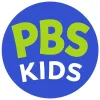Take a look inside 4 images
PBS Kids
Pros: High-quality resources backed by strong learning design and attention to kids cognitive, social, emotional, and physical development.
Cons: So much variety can be overwhelming. Kids will likely need guidance to access specific resources.
Bottom Line: Robust collection of learning resources covers an impressive array of topics.
Teachers will want to spend some time exploring PBS Kids to discover everything it has to offer. They can use the site to assign games or videos from specific shows as extensions or explorations of topics recently covered in the classroom. Or they can consider using the site's features as an introduction to class activities. For example, teachers can assign some of the Ruff Ruffman media literacy games before using computers in the computer lab.
Because PBS Kids is mostly a host site for many other sites, teachers will need to either be very specific about which games they want their students to play (and then monitor them) or allow kids to explore games around a given topic. Doing a unit on math? Let kids play around on Cyberchase. There's no way to track what kids play and how they're doing, so teachers shouldn't plan on using the site to assess performance.
PBS Kids is a directory for over 30 TV and web-only PBS Kids shows designed for older preschool and early elementary school-age kids. Kids can navigate directly to a particular show's individual site, where they'll find games, videos, activities, and other related content.
The content topics are as varied as the PBS Kids lineup. For instance, Wild Kratts games address science and animals; Oddsquad, math; SuperWhy, early literacy; Design Squad, engineering; and Let's Go Luna, cultural diversity. There are also games, activities, and videos for exploring girl power in science, SEL, critical thinking, American history, culture, geography, and music, as well as some games that touch on media literacy.
PBS Kids gathers a wealth of content in one central location. Each individual PBS Kids show is supported by specific learning goals, developed with expert advice and often tested to demonstrate effectiveness. With educational activities, creation tools, plenty of suggestions for extending learning offline, and lots of fun, the PBS Kids sites are rich with learning potential.
The downside is that PBS Kids could use more structure, as kids can easily get distracted. The site could be stronger if, for instance, it included better progress assessments and a clear listing of all the learning subtopics available.













